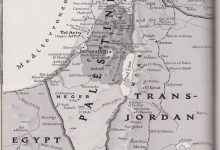The United Arab Emirates: A Nexus of Tradition and Modernity
The United Arab Emirates (UAE) stands as a remarkable example of rapid transformation from a collection of small desert states into a global hub for trade, tourism, and innovation. Established in 1971, the UAE is a federation of seven emirates: Abu Dhabi, Dubai, Sharjah, Ajman, Umm Al-Quwain, Fujairah, and Ras Al Khaimah. This unique political structure reflects both the historical tribal affiliations of the region and the modern aspirations of a nation that is continually evolving.
Historical Background
The roots of the UAE trace back to the early 20th century, when the Trucial States, as they were known, entered into agreements with the British Empire to secure their territories against external threats. This arrangement provided a degree of protection while allowing the local rulers to maintain a significant level of autonomy. The discovery of oil in the 1950s marked a pivotal turning point, catalyzing economic development and modernization efforts across the emirates.
In 1971, six emirates united to form the UAE, with Ras Al Khaimah joining shortly after. Sheikh Zayed bin Sultan Al Nahyan, the first President of the UAE, played a crucial role in fostering unity and guiding the nation towards modernization. His vision encompassed not only economic growth but also social development, emphasizing education, healthcare, and infrastructure.
Political Structure
The UAE’s political framework is a blend of traditional and modern governance. Each emirate is governed by its own ruler, and the council of rulers elects the President and Vice President of the federation. Abu Dhabi’s ruler typically serves as President, while Dubai’s ruler often takes the position of Vice President. This system allows for a degree of autonomy within each emirate while fostering collective decision-making on national issues.
The Federal National Council (FNC) serves as an advisory body, comprising members appointed from each emirate, with a minority elected by citizens. Although the FNC’s powers are limited, it represents a step towards political participation and public engagement in governance.
Economic Diversification
While the UAE’s economy has historically been reliant on oil, there has been a concerted effort to diversify its economic base. Initiatives such as the Abu Dhabi Economic Vision 2030 and the Dubai Plan 2021 have been implemented to reduce dependence on oil revenues and promote sectors such as tourism, aviation, finance, and renewable energy.
Dubai has emerged as a global city and a major financial hub, attracting multinational corporations and tourists alike. The Dubai International Airport is one of the busiest in the world, serving as a crucial gateway for international travelers. Furthermore, events such as the World Expo 2020 have showcased the UAE’s commitment to innovation and sustainability, further solidifying its position on the global stage.
Cultural Heritage and Tourism
The UAE’s cultural landscape is a unique tapestry woven from traditional Bedouin customs and modern cosmopolitan influences. The government has invested significantly in preserving its cultural heritage while promoting tourism as a vital component of its economy. Museums, art galleries, and cultural festivals celebrate both the rich history and contemporary artistic expressions of the region.
Sheikh Zayed Grand Mosque in Abu Dhabi, a masterpiece of Islamic architecture, stands as a symbol of the nation’s commitment to religious tolerance and cultural dialogue. Similarly, Dubai’s Burj Khalifa, the tallest building in the world, epitomizes the UAE’s ambition and modernization.
Tourism has flourished in the UAE, attracting millions of visitors each year. Attractions such as the Louvre Abu Dhabi, the Dubai Mall, and the cultural district of Al Quoz offer diverse experiences for travelers. Additionally, traditional activities such as falconry, camel racing, and Bedouin feasts provide insight into the UAE’s rich heritage.
Social Development and Education
The UAE places a strong emphasis on education and social development, recognizing the importance of human capital in its journey towards modernization. The government has established numerous educational institutions, including universities and vocational training centers, aimed at equipping citizens with the skills necessary for a diversified economy.
The National Strategy for Wellbeing 2031 focuses on enhancing the quality of life for UAE residents by promoting health, happiness, and social cohesion. Initiatives aimed at fostering community engagement and cultural understanding further contribute to the nation’s social fabric.
Environmental Sustainability
As the UAE continues to grow, environmental sustainability has become a key focus. The government has implemented policies aimed at protecting natural resources and promoting sustainable practices across various sectors. Initiatives such as Masdar City in Abu Dhabi exemplify the country’s commitment to renewable energy and sustainable urban development.
The UAE’s investment in clean energy is reflected in its hosting of the International Renewable Energy Agency (IRENA) and its ambitious goals to generate a significant portion of its energy from renewable sources by 2050. The commitment to environmental sustainability not only addresses local challenges but also positions the UAE as a leader in the global fight against climate change.
Conclusion
The United Arab Emirates represents a dynamic fusion of tradition and modernity. Its journey from a collection of disparate tribes to a unified federation is a testament to visionary leadership and a commitment to progress. As the UAE navigates the complexities of globalization, it continues to embrace its cultural heritage while striving for economic diversification and social development.
Through a focus on education, environmental sustainability, and cultural preservation, the UAE is not merely a nation of skyscrapers and luxury but a vibrant society with a rich history and a promising future. As it moves forward, the UAE’s unique identity will undoubtedly continue to evolve, shaping its role on the world stage for generations to come.
References
- United Nations Development Programme. (2020). Human Development Reports. UNDP.
- World Bank. (2021). United Arab Emirates Overview. World Bank.
- UAE Government Portal. (2022). Vision 2021. UAE Government.
- International Renewable Energy Agency (IRENA). (2021). Renewable Energy in the UAE. IRENA.

